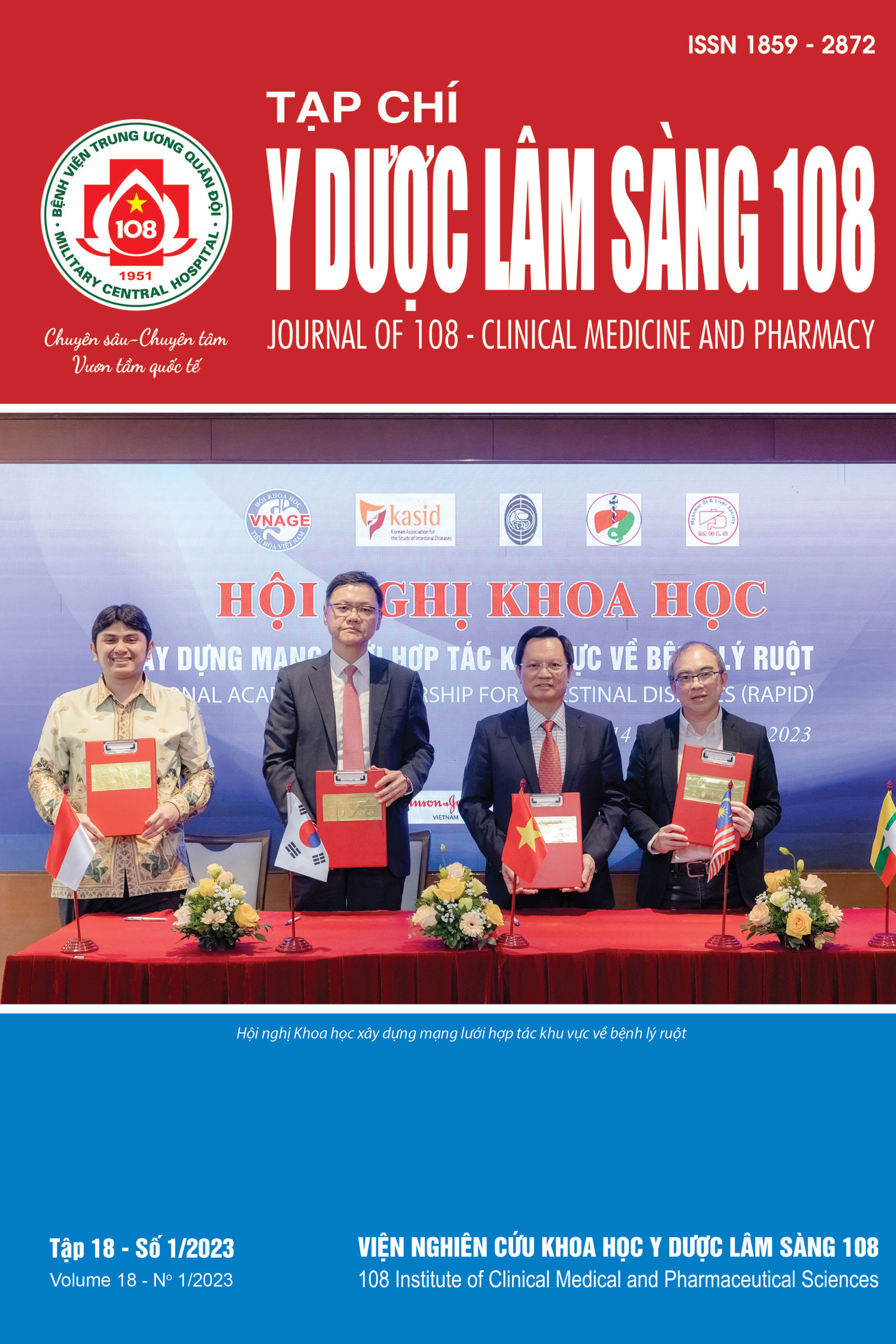Study on characteristics of ventilation associated pneumonia at Emergency Department of Bach Mai Hospital in 2022
Main Article Content
Keywords
Abstract
Objective: To describe the characteristics of invasive ventilator patients at A9 Emergency Department, Bach Mai Hospital. To determine the rate of invasive ventilator-associated pneumonia in patients and some related factors. Subject and method: A longitudinal study was conducted among patients ≥ 16 years old, with continuous ventilation for more than 48 hours at A9 Emergency Department, Bach Mai Hospital from December 2020 to May 2022. The patient had no evidence of pneumonia prior to their participation and was followed up from the start of intubation until the patient was extubated or tracheostomy or died, transferred to another hospital/discharge. Ventilator-associated pneumonia was diagnosed according to Pugin's CPIS pneumonia clinical criteria. Data were collected over time from medical records including clinical and laboratory indicators and nursing care monitoring sheets. The incidence of ventilator-associated pneumonia was calculated as the number of patients with pneumonia divided by the number of ventilator patients at risk of pneumonia. Univariate regression model was used to identify factors associated with ventilator-associated pneumonia. Result: Of 140 eligible patients in the study, the incidence of ventilator-associated pneumonia was 35% (49/140) with the most common bacteria causing pneumonia being A. baumanii: 38.8% (19/49). Univariate regression model showed that factors increase the risk of ventilator-associated pneumonia include: unconsciousness on admission (OR = 2.49, p=0.023), Emergency intubation (OR = 2.13; p = 0.034), endotracheal tube without suction system (OR = 2.87, p = 0.028), Glasgow score <= 8 (OR = 5.34, p=0.012), number of days on mechanical ventilation ≥ 5 (OR = 4.53, p<0.0001), number of days in Emergency Department (OR = 4.43, p<0.0001), the low level of care for ventilator system (OR = 2.22, p=0.033) and the low level of patient's physical care level (OR = 2.47; p=0.013). Conclusion: Consciousness status, emergent intubation, type of endotracheal tube, intubation duration, hospitalization duration, and level of care for ventilated patients are factors associated with ventilator-associated pneumonia. Therefore, improving the quality of comprehensive care, especially among people at high risks plays an important role in the prevention of ventilator-associated pneumonia.
Article Details
References
2. Bùi Hồng Giang (2013) Nghiên cứu đặc điểm vi khuẩn và điều trị nhiễm khuẩn bệnh viện tại khoa Hồi sức tích cực, Bệnh viện Bạch Mai năm 2012. Luận văn Tạc sĩ Y học - Chuyên ngành hồi sức cấp cứu, Trường Đại học Y Hà Nội.
3. Nguyễn Hương Giang (2012) Đánh giá tình trạng nhiễm khuẩn bệnh viện trên người bệnh thở máy và hiệu quả chăm sóc của điều dưỡng viên Bệnh viện Bạch Mai. Khóa luận tốt nghiệp cử nhân Điều dưỡng, trường Đại học Thăng Long.
4. Phạm Văn Hiển (1996) Sử dụng phương pháp rửa phế nang qua ống nội soi mềm để xác định nhiễm khuẩn phổi phế nang ở bệnh nhân thở máy. Luận văn thạc sỹ y khoa, Đại học Y Hà Nội.
5. Lại Văn Hoàn (2011) Đánh giá thực trạng nhiễm trùng bệnh viện tại Trung tâm Chống độc - Bệnh viện Bạch Mai. Luận văn thạc sĩ Y học – Chuyên ngành Hồi sức cấp cứu, Đại học Y Hà Nội
6. American - Thoracic - Socity (2005) Guidelines for the management of adults with hospital - acquired, ventilator associated, and healthcare - associated pneumonia. Am J Respir Crit Care Med 171
 ISSN: 1859 - 2872
ISSN: 1859 - 2872
